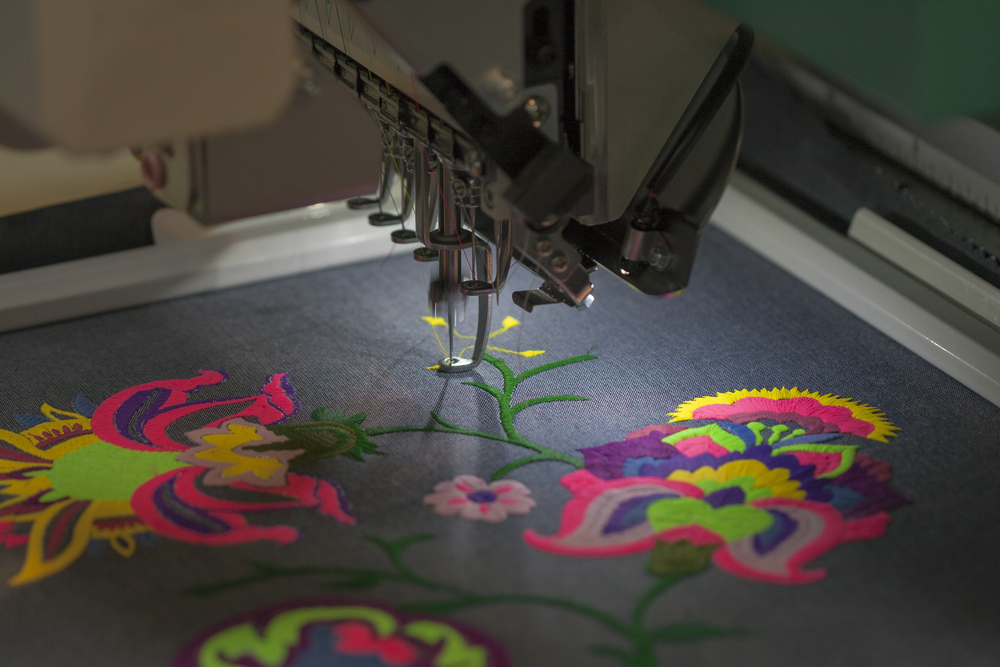Reliable Digitizing for Embroidery: Quick Turnaround
Reliable Digitizing for Embroidery: Quick Turnaround
Blog Article
Grasping the Needlework Digitizing Process: Your Ultimate Overview
Needlework digitizing is a precise craft that requires accuracy and experience to convert intricate layouts right into electronic layouts for equipment needlework. As craftsmens get started on this trip to understand the needlework digitizing procedure, a detailed understanding of the fundamentals sets the foundation for excellence.

Understanding Embroidery Digitizing Basics
Embroidery digitizing basics form the foundation upon which elaborate styles are equated into machine-readable formats for accurate stitching. This preliminary action in the needlework digitizing procedure is crucial for guaranteeing that the final embroidered item is a loyal representation of the initial design. Comprehending embroidery digitizing basics involves grasping key ideas such as stitch types, stitch direction, thickness, padding, and draw payment.
Stitch types play an important role in determining the aesthetic and textural end result of the stitched style. By choosing the suitable stitch type, whether it be satin, fill, or running stitch, digitizers can accomplish the preferred impact and enhance the total top quality of the needlework. Furthermore, stitch direction influences the circulation and measurement of the style, while density figures out the spacing and protection of the stitches.
Furthermore, underlay stitching provides security to the layout by protecting the textile and avoiding distortion during the needlework process. Draw compensation is another necessary factor to consider to combat the all-natural propensity of material to contract when stitched. Grasping these needlework digitizing fundamentals is fundamental for developing professional-quality stitched items.
Selecting the Right Digitizing Software Program
Selecting the proper digitizing software is an important choice that considerably affects the performance and quality of the needlework digitizing procedure. Digitizing for Embroidery. When choosing the best digitizing software application, it is important to think about variables such as the intricacy of designs you plan to produce, the user-friendliness of the software application, the degree of consumer assistance supplied, and the compatibility with your embroidery equipment
There are numerous digitizing software options readily available on the market, ranging from fundamental programs for newbies to advanced software application for expert digitizers. Some preferred selections consist of Wilcom EmbroideryStudio, Hatch Needlework Software Application, and PulseID. These software application bundles use a wide variety of devices and functions to assist you produce elaborate styles effortlessly.
Prior to deciding, it is a good idea to check out the different software options via cost-free tests or demonstrations to identify which one best matches your demands. Additionally, reading testimonials and looking for suggestions from experienced digitizers can provide beneficial understandings into the strengths and weak points of each software program plan (Digitizing for Embroidery). By very carefully examining your requirements and comparing wikipedia reference the attributes of various digitizing software application, you can make an informed selection that enhances your needlework digitizing process
Digitizing Tools and Strategies

Optimizing Layout Setup for Needlework
Understanding the details of layout setups is basic in attaining ideal lead to the embroidery digitizing process, building upon the foundation laid by recognizing digitizing devices and strategies. When maximizing style setups for needlework, it is vital to think about aspects such as stitch type, density, underlay, draw compensation, and enrollment. Stitch kind choice affects the total feel and look of the style, with options like satin, fill, and running stitches offering various structures and results. Thickness describes the spacing and thickness of stitches, impacting the layout's protection and resilience. Correct padding sewing supplies stability and prevents textile distortion, particularly for intricate styles or on stretchy products. Pull settlement changes for fabric stretch throughout stitching, guaranteeing exact style replication. Enrollment settings straighten different components of the style check this site out precisely, keeping general layout stability. By fine-tuning these design setups, embroiderers can enhance the high quality and precision of their stitched creations.

Troubleshooting Common Digitizing Issues
When encountering typical digitizing issues during the needlework process, it is essential to comprehend the origin triggers and apply effective options promptly. One typical trouble is stitch density problems, where stitches might be too dense, creating the fabric to pucker, or also thin, resulting in voids in the design. Readjusting the stitch thickness settings in the digitizing software application can aid resolve this problem.
One more constant challenge is thread breaks throughout the needlework procedure. This can occur because of numerous reasons such as inaccurate stress setups, plain needles, or using low-quality thread. Making sure correct upkeep of the needlework machine, including regular needle changes and tension modifications, can lessen the event of string breaks.
In addition, layout enrollment mistakes can cause misaligned elements within the embroidery design. Checking the design alignment in the digitizing software and making necessary adjustments before stitching can help in preventing this concern. By attending to these typical digitizing problems immediately and successfully, you can make sure a smoother embroidery process and premium completed products.
Conclusion
Finally, understanding the needlework digitizing procedure needs a solid understanding of the essentials, the appropriate selection of software application, and understanding of tools and techniques. Maximizing style settings and fixing like it typical digitizing issues are crucial action in making sure premium embroidery outcomes. By adhering to these steps diligently, one can attain accuracy and efficiency in the digitizing procedure.
Report this page